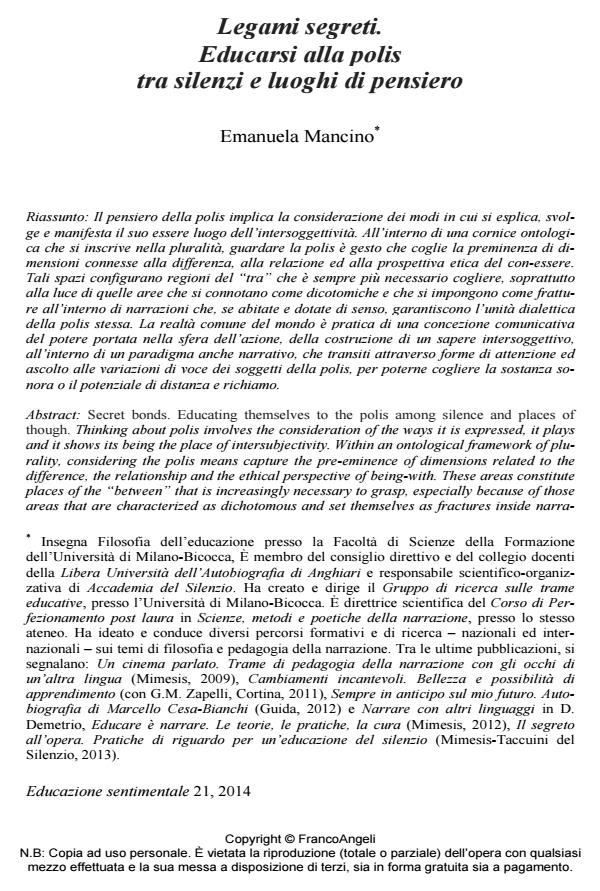Legami segreti. Educarsi alla polis tra silenzi e luoghi di pensiero
Journal title EDUCAZIONE SENTIMENTALE
Author/s Emanuela Mancino
Publishing Year 2014 Issue 2014/21
Language Italian Pages 15 P. 152-166 File size 681 KB
DOI 10.3280/EDS2014-021015
DOI is like a bar code for intellectual property: to have more infomation
click here
Below, you can see the article first page
If you want to buy this article in PDF format, you can do it, following the instructions to buy download credits

FrancoAngeli is member of Publishers International Linking Association, Inc (PILA), a not-for-profit association which run the CrossRef service enabling links to and from online scholarly content.
Secret bonds. Educating themselves to the polis among silence and places of though. Thinking about polis involves the consideration of the ways it is expressed, it plays and it shows its being the place of intersubjectivity. Within an ontological framework of plurality, considering the polis means capture the pre-eminence of dimensions related to the difference, the relationship and the ethical perspective of being-with. These areas constitute places of the "between" that is increasingly necessary to grasp, especially because of those areas that are characterized as dichotomous and set themselves as fractures inside narratives. Narratives that could ensure the unit dialectic of the polis itself. The common reality of the world is the practice of a communicative conception of power that is flowed in the sphere of action, constructing an inter-subjective knowledge, even within a narrative paradigm, which transits through forms of attention and listen to the changing voice of the subjects of the polis in order to capture the sound substance or possible distance and calling.
Keywords: Intersubjectivity, narrative, subject, desire, experience, relationship, ethics
Emanuela Mancino, Legami segreti. Educarsi alla polis tra silenzi e luoghi di pensiero in "EDUCAZIONE SENTIMENTALE" 21/2014, pp 152-166, DOI: 10.3280/EDS2014-021015